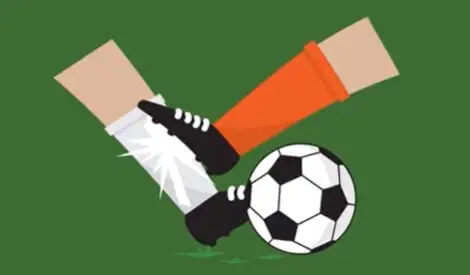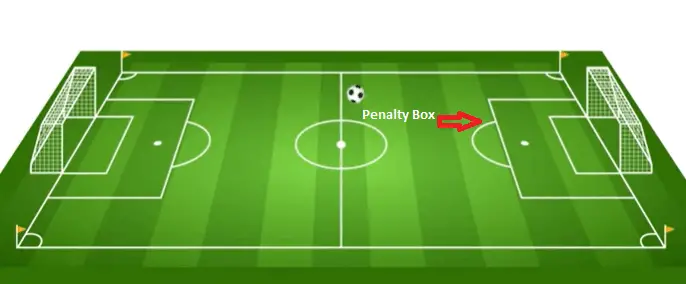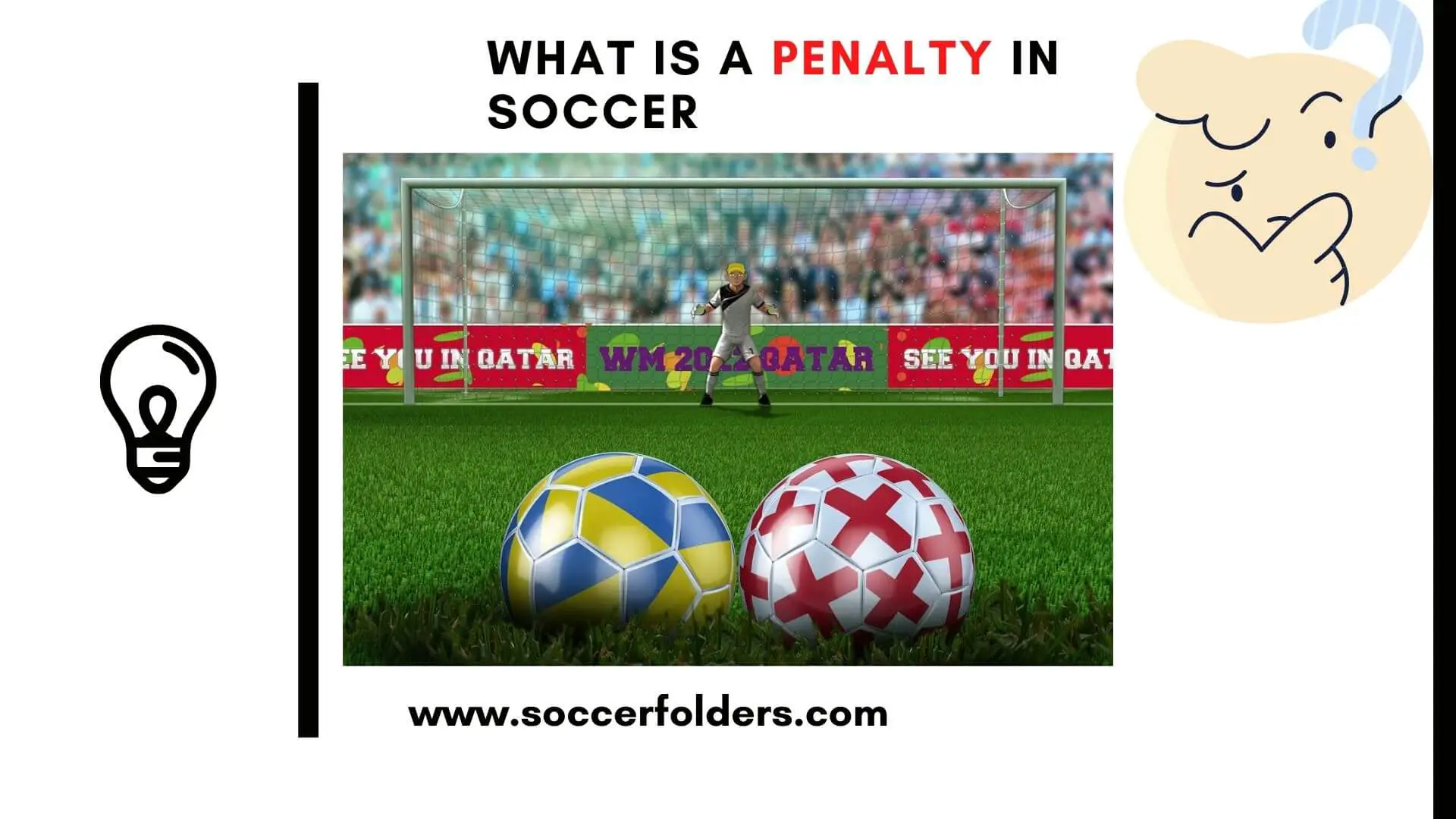What is a penalty in soccer?
First thing first, soccer is a game that can lead players to commit several fouls for various reasons. Those fouls can be committed anywhere on the pitch and potentially cause a free kick or a penalty kick.
Today, let’s focus on the penalty kick. What is it and how does it work?
In this article, you are going to have a basic understanding of the penalty kick in soccer, how and why it happens.
Let’s get started.
What Is A Penalty In Soccer?
In soccer, a penalty kick is a one-on-one situation between a goalie and an opposing player when a foul has been committed inside the penalty box. But, the foul has to be committed by the goalkeeper or any of his teammates inside their own penalty area against the opposition.
For example, if you are a defender and you hit an opposing forward inside your penalty box(The area where your goalie is), the referee might sanction you and award a penalty to the opposition.

Therefore, the opposition has a goalscoring opportunity on a one-on-one with your goalkeeper.
Although players don’t know whether they will score the penalty or not, they are happy because having a penalty gives 90% of chances to score a goal.
This makes sense because the goal post area is about 8 yards long and 8 feet high, making it almost impossible for a professional player to miss.
But, of course, many pro players have missed penalties during the last decades.
Plus, according to some experts, a penalty kick is a mind game. The kicker must choose a side where to place the ball while the goalie must decide on a side to jump.
This is what makes it more exciting.
Not Every Foul In The Box Is A Penalty
Keep in mind that not every foul in the box is a penalty kick in soccer.
There can also be an indirect free kick.
An indirect free kick is given in the penalty box when a player passes the ball to his goalie and the goalie catches the ball with his hands.
One of the multiple rules of soccer is that a goalkeeper is not allowed to pick up the ball when a teammate is passing him the ball with their feet.
There is an exception only if the teammate passes the ball using their head or chest. In this case, the goalie can safely pick the ball with his hands without being penalized by the referee.
All of that is good, but what is the purpose of a penalty box in the first place?
What Is The Purpose Of A Penalty Box?

The purpose of a penalty box is to determine the area where the goalie can catch the ball with his hands. Simple as that.
You have to understand that the goalie is the most important position in soccer and the only player allowed to touch the ball with his arms.
Therefore, the goalkeeper must have an area well structured where he is the “boss” and can do whatever he wants. So, not only the goalie can do whatever he wants, but the penalty box is a very sensitive area where any defending team that breaks the rules here can be easily punished.
If there wasn’t a penalty box, the goalie would catch the ball with his hands anywhere on the pitch and this would be a mess.
How Do Penalty Kicks Work In Soccer?
Here is how penalty kicks work in soccer:
- During the penalty, the ball is placed on the penalty mark and the kicker must be properly identified.
- Only the goalkeeper must defend the attempt.
- Only the goalie, the penalty kicker and the referee are allowed in the penalty box.
- The defending goalie must remain on his goal line between the goalpost facing the kicker until the ball has been kicked.
- Other players must be outside the penalty box.
- After the player has taken position, the referee gives the signal for the penalty to be taken.
- The player taking the penalty must kick the ball forward.
- After kicking the ball forward, the kicker must not touch the ball again until it has been touched by another player.
- Additional time is allowed for a penalty kick to be taken. So, the kicker can wait a few seconds before kicking the ball.
- The penalty kicker shouldn’t feint or fake shoot.
You can find the complete law 14 about the penalty kick here.
Two Players Can Take A Penalty Kick
Two players are allowed to take a penalty kick but the second player shouldn’t enter the box until the ball has been touched by the main kicker.
Remember, we mentioned above that only the goalie and the penalty kicker are allowed in the box during the penalty kick.
However, if you want to pass the ball to a teammate during this process, here is how it works:
- No one should expect that you are about to pass the ball to your teammate
- Run as if you were going to score yourself, then make a chicky pass to your teammate
- Your teammate has to follow your movements from start to finish
- Your teammate must run to get in the box when your foot touches the ball. So, he has to be fast
This trick is now being used by many professional players during a penalty kick.
Lionel Messi and Suarez have revolutionised this a couple of years ago in Barcelona vs Celta Vigo. During this game, Messi penalty assisted Suarez.
Final Word
At the end of this article, it should be remembered that a penalty occurs when the defending team commits an offence in their own penalty box. Then, a penalty is awarded to the opposing team.
This was a basic understanding of the penalty kick in soccer.
I hope you have gained value from it.
If you have any questions, consider leaving them in the comment section below and I will get back to you ASAP.
You can also read: Is pushing allowed in soccer?


Nice Blog! Keep on posting.